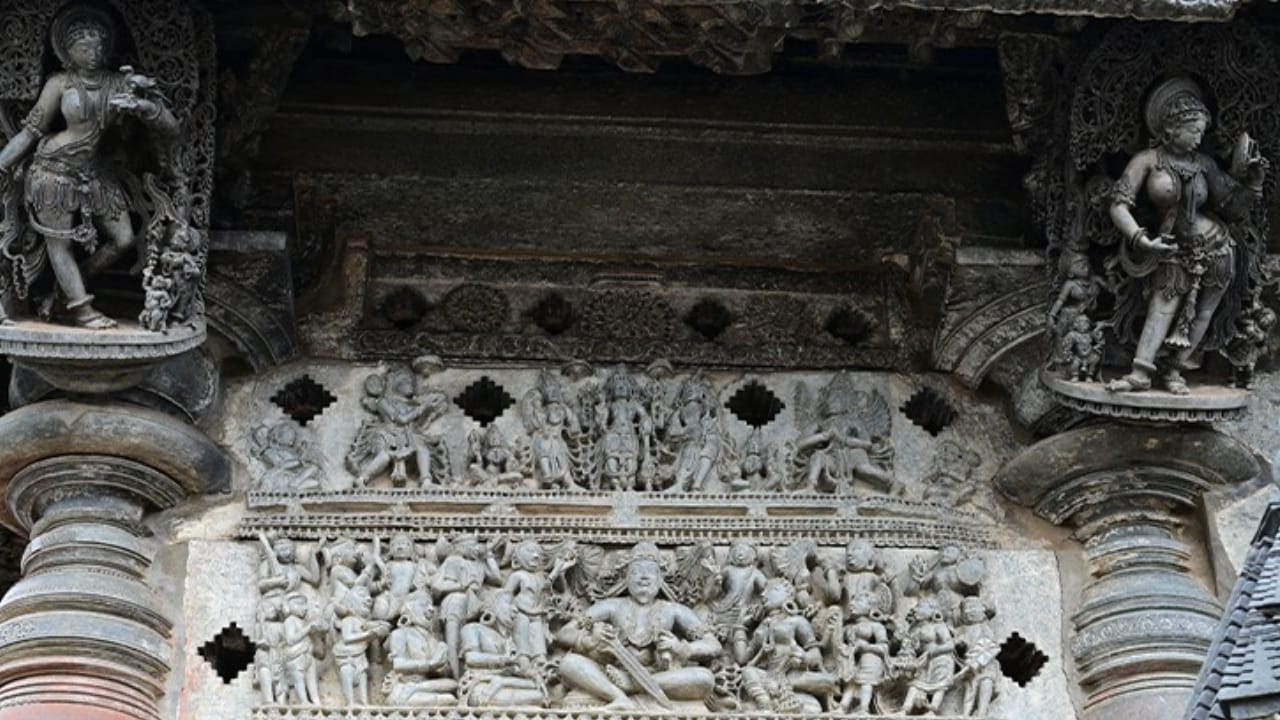Explore the majestic temple towns of Halebidu and Belur in Karnataka, known for their stunning Hoysala architecture, intricate stone carvings, and rich history, a must-visit destination for heritage and culture lovers.
Tucked away in the lush landscapes of Karnataka, Halebidu and Belur are twin towns that echo with the art, culture, and architectural brilliance of the 12th-century Hoysala dynasty. With temples carved in stone so intricately that they seem to breathe life, these heritage sites offer more than history; they offer poetry, frozen in time.
A Glimpse into History
Once royal capitals of the Hoysalas, Belur and Halebidu stood as cultural and administrative centres of power. While Belur was the earlier capital, known for its religious harmony and grandeur, Halebidu (then called Dwarasamudra) took over as the Hoysala stronghold before being repeatedly invaded by the Delhi Sultanate in the 14th century.
Despite centuries of wear, what remain are two of India’s most exquisite examples of temple architecture:
- Chennakeshava Temple (Belur): Dedicated to Lord Vishnu, this temple took over 100 years to complete. Its star-shaped platform, sculpted ceilings, and lifelike figurines of dancers and musicians reflect a rare mix of devotion and artistry.
- Hoysaleswara Temple (Halebidu): Built in honour of Lord Shiva, this temple is famed for its outer walls, adorned with over 2,000 detailed sculptures, ranging from mythological epics to everyday life scenes.
Things to Do in Halebidu and Belur
Whether you’re a history buff, an art lover, or just a curious traveller, there’s plenty to experience:
Explore the Temples
- Take a guided tour of Chennakeshava Temple to learn about its symbolic carvings.
- Walk around Hoysaleswara Temple to admire the storytelling in stone, especially depictions from the Ramayana, Mahabharata, and Bhagavata Purana.
Photography and Sketching
- The intricate sculptures provide the perfect subjects for photographers and sketch artists. Visit during golden hours (early morning or late afternoon) for the best light.
Visit the Archaeological Museum (Halebidu)
- This small museum houses temple fragments, ancient inscriptions, and well-preserved sculptures that give more context to the region’s glorious past.
Take a Heritage Walk or Cycle Tour
- Local guides and eco-tourism groups offer temple walks and cycle trails that pass through villages, paddy fields, and old step-wells.
Day Trips Nearby
- Visit Shravanabelagola, home to the 58-foot monolithic statue of Gommateshwara (Bahubali), just 1.5 hours away.
- Explore Yagachi Dam for water sports or a serene sunset picnic.

Where to Stay and Where to Eat?
While both towns are small, nearby Hassan (about 30 km) offers a wider range of accommodations.
Dining options are basic but authentic. Expect South Indian vegetarian fare with a few multi-cuisine choices in Hassan. Don’t miss trying Ragi Mudde, Bisi Bele Bath, or Filter Coffee, local staples served fresh and hot.
Best Time to Visit
- October to March is ideal — with pleasant weather and clear skies.
- Avoid summer (April–June), as it can get hot and dry.
- Visit during Hoysala Mahotsava, an annual cultural festival, to see the temples come alive with music and dance.
Halebidu and Belur aren’t just historical sites; they are living examples of India’s rich artistic legacy. Walking through these temples, you don’t just see carvings; you feel stories unfolding, gods dancing, and history breathing through the stone.
Whether you’re tracing the roots of Indian art or simply craving a quiet cultural escape, these towns offer more than a destination, they offer a journey into timelessness.
